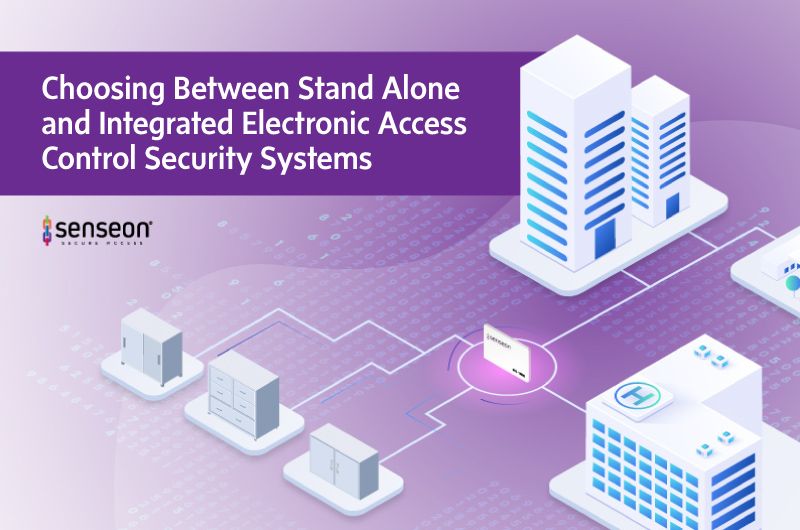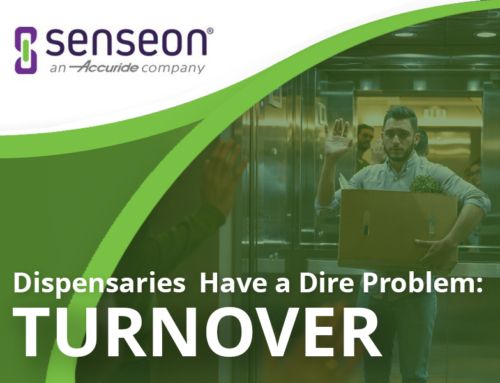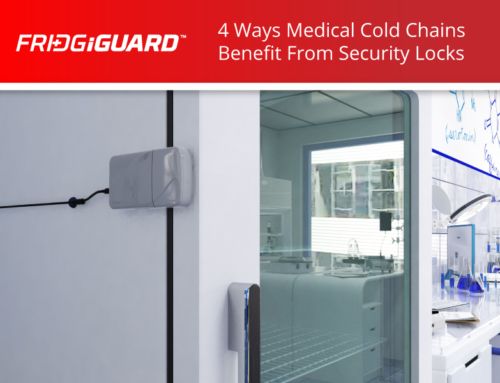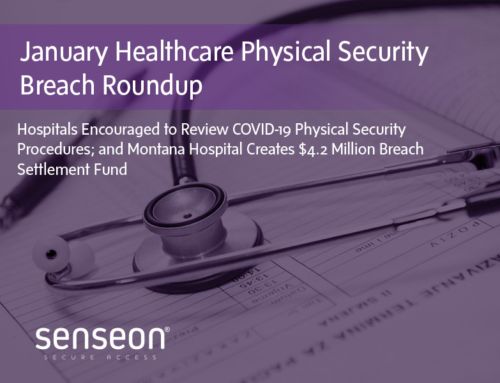Access control is a central component of any modern security system. While electronic locks offer keyless entry, access control can include features such as programmable credentials, centralized management, scheduled access, and individually assigned codes.
Not all systems, however, offer the same benefits.
One key factor in determining the capabilities of an access control system is whether the device operates independently or as part of an integrated system.
Standalone Electronic Locks vs. Integrated Electronic Locking Systems
Electronic access control security systems are available as either a standalone unit or as part of a broader, more integrated system.
Standalone Electronic Access Control Locks
Standalone electronic locks, also known as disparate security systems, provide access to one or more locks with a single control box. A unit can secure an entry door or multiple cabinets, using separate codes for each drawer, operated by a single control panel.
The more traditional approach to electronic locks, disparate security systems remain independent and do not communicate with other networks within an office or building. An administrator must change credentials directly from the control panel or reader. Actions from one system do not impact the operation of another. Likewise, the failure of one system will not affect the activities of independent security measures.
Challenges of Standalone Security Systems
The downside of a standalone access control system is that one system cannot communicate with another. Staff or administrators must activate, deactivate, and monitor each system independently, which can require more time and lead to redundancy. The units also require separate maintenance and system updates. In many cases, maintaining multiple systems increases storage requirements, creates duplication, and results in slower processes because system operators must interact with and input data into multiple systems.
Each electronic locking system has its own infrastructure, hardware, and user consoles. If a security breach occurs, administrators must investigate the data found on standalone units independent of an integrated system, which can add time and costs to an investigation.
Benefits of Standalone Security Systems
There is less vulnerability of a security hack due to the lack of online access. A security breach within an integrated system does not impact standalone devices.
Common uses include:
- Door locks
- Security cameras
- Intercoms
- Vehicle barriers
- Cabinets
- File cabinets
- Desk drawers
For instance, physicians’ offices have cabinets containing everything from medical supplies to prescription drug samples. The company could utilize a standalone electronic access control system to lock all the file cabinets, using one control panel. The office manager or system administrator could then assign separate codes for each cabinet from a single location. Physicians might have access to all cabinets, whereas CNA’s may only have credentials to enter cabinets containing supplies but not medications.
Integrated Electronic Access Control Locking Systems
Integrated access control systems can communicate with existing systems, creating a comprehensive, secure network for an entire building, complex, or home. These systems improve the overall physical security network because it is easier to make changes, track activity, and manage access control remotely. Companies can also integrate new locks into an existing system with a dedicated platform.
It is common to integrate locking devices with other access control measures, such as video surveillance, intruder alarms, perimeter security, or fire detection systems. Having all elements of security in tandem can improve the efficiency of the system, reduce redundancy, and streamline implementation. Integrated systems allow multiple units and, in some cases, different departments (like HR or operations) and brands to connect.
Administrators typically operate the access control system through a cloud-based platform, giving them immediate access to log-in credentials and the ability to remotely monitor activity in real-time.
Challenges of Integrated Electronic Access Control Locking Systems
One major downside of integrated access control systems is the cost. Proprietary systems can lock a company into using a single vendor, which can increase the price and limit flexibility. When it is possible to use multiple brands, software compatibility can raise the cost of both installation and operations.
System availability through web-based platforms offers both a benefit and a challenge. There is a higher risk of a third-party security breach, putting the entire security system at risk, and system failure will impact multiple areas of the company. Upgrades and new software versions can impact both integration and daily operations.
Even if an integrated access control system meets all security needs, poor implementation can leave vulnerabilities unchecked. Integrations for the sole purpose of reducing hardware requirements may not result in an adequate infrastructure to capture all security concerns.
Finally, integrating multiple systems not originally designed to work together can create redundancy.
Benefits of Integrated Electronic Access Control Locking Systems
The key benefit of an integrated access control system is that everything works together, generating a seamless user experience. There is typically a reduction in hardware and network infrastructure, which can reduce the space needed to maintain the system and operate access controls. Administrators can synchronize software, potentially reducing staffing needs.
Data storage occurs in a central location, and communication across devices can improve efficiency. Administrators typically spend less time inputting data because they can operate multiple systems simultaneously.
Well managed systems can deliver speed and accuracy. These systems can recognize significant events and trigger additional security measures as needed. For instance, one issue can prompt further actions from multiple sources. A credential failure could activate cameras, alarms, or other precautions, thereby improving security.
Servers can operate multiple systems and subsystems, creating checks and balances to ensure the system works optimally and adequately.
Final Thoughts
Directly integrating systems, without a comprehensive plan in place, may not improve operations and can lead to security gaps that create additional vulnerabilities. Deciding on the performance objectives in relation to the security need will determine the best system.
Only a well-designed access control system that addresses all of the company’s or homeowner’s security needs can successfully manage risk, secure the premises, and reduce vulnerabilities.
Companies like Senseon specialize in both standalone and integrated access control options. Contact us to learn more about how a Senseon system can strengthen your cabinet-level security.






